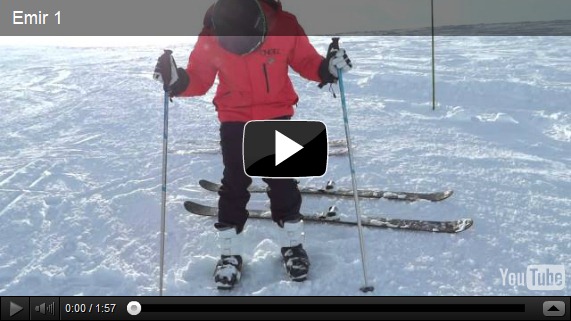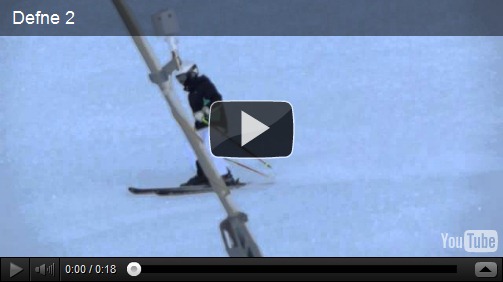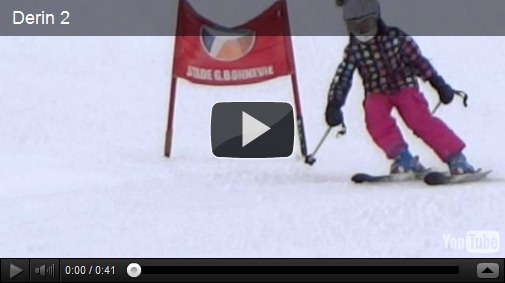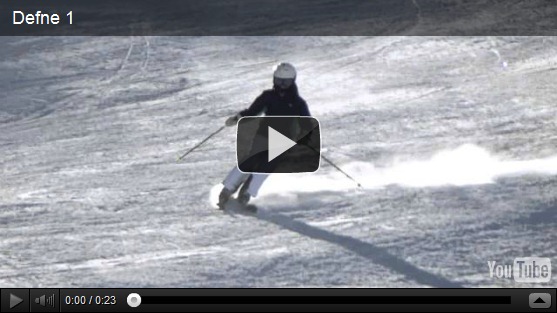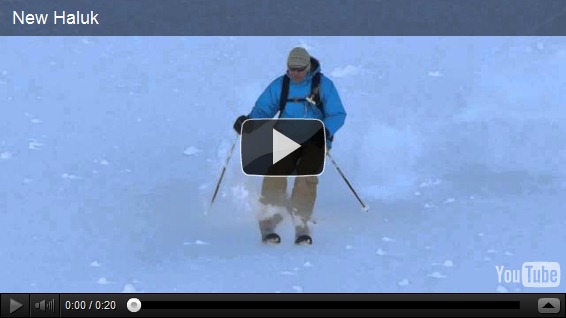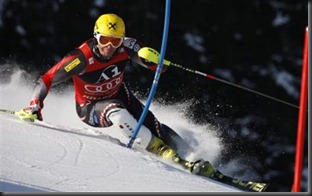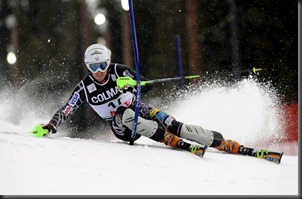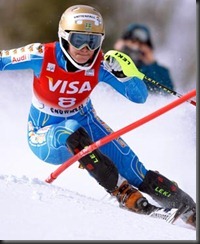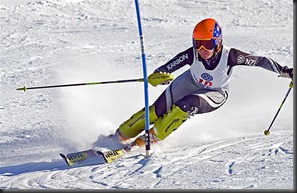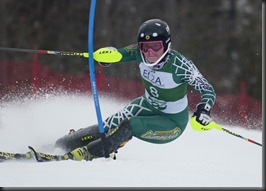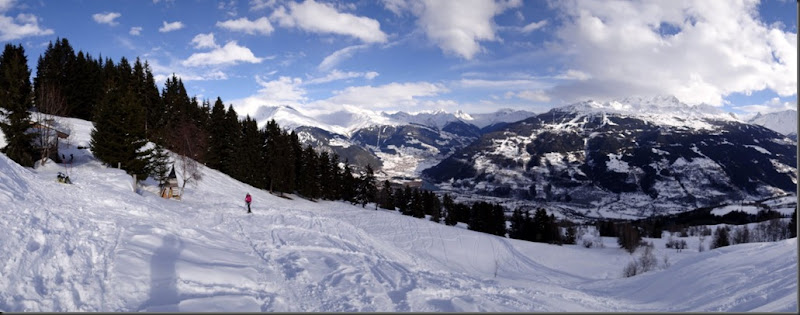Today it was predictable that little Derin would be a bit tired. If the skiing all day wasn’t tiring enough she was apparently buzzing all evening due to the excitement of skiing and didn’t go to bed until quite late. Very surprisingly none of that affected her today – except that she started to fall asleep a little bit more obviously before the end of the day and had to be carried home on Tiffany's back. We had planned a trip up the “flying boxes” (Aeroski) towards the end of the day when her powers of concentration would begin to fade but unfortunately the wind was too high and they wouldn’t allow us to go up, so she contented herself with a lollipop instead.
Coordination Exercises
In the morning when Derin was fresh we worked on coordination exercises. Each aspect was covered with the skis off so that she could get the feeling of the boots holding the feet on edge and the appropriate movement patterns without also dealing with sliding all over the place. Her coordination in general was markedly improved over yesterday and this is a normal rate of development. The ski boots run up the side of the leg to allow the feet and skis to stay on edge instead of automatically flattening. To be honest, even more time negotiating terrain in just ski boots would be a lot of benefit. Most beginners are used to being on flat ground, not on mountain slopes and they are definitely not used to using the edges of their feet in this manner. When we did the side stepping uphill in the boots she didn’t know what the word edge meant – something I verified later on. Together with Tiffany we explained what edges are in general. The coordination exercises were all repeated with the skis on – the sidestepping uphill and the skating actions on the flat. Skiing is really a form of skating so this coordination is fundamental.
Skiing
After the exercises and a little bit of skiing from the chairlift Derin asked to go to the restaurant. She probably didn’t eat enough breakfast because she had a fixation on eating cake. Fortunately I had been supplied with some chocolate (the remainder of which I passed to Tiffany at the end of the day) so that along with a hot chocolate managed to do the trick. Amazingly, with only me there she made absolutely no mess with the hot chocolate! That was the one and only time she asked to stop skiing. The other time she had to stop was for an emergency pee – but that’s fairly normal for a four year old skier. I’ve known other children who preferred to fill their ski boots rather than say anything. Fortunately Tiffany was around to help deal with the emergencies!
For the skiing we worked on sideslipping, forward diagonal sideslipping and pivoting – all of course being led by me and Derin holding on to the pole. She was steadily becoming easier to lead into the pivoted turns from the uphill ski edges. When on the straight sections sometimes I’d let go of the pole and she would still be hanging on thinking that I was supporting her – but she was really supporting herself. She is now able to stand still with the skis across a slope on their uphill edges and remain there stable with no danger of slipping off down the hill.
Tiffany had a go at the coordination exercises along with Derin and also the pivoting. I took a few minutes to help her to feel the pivoted turn and then advised her to just do it slightly while the skis were almost straight running down the shallow gradient.
When sitting on the terrace of the restaurant there was a constant shower of ice from above – and this little fellow was one of the culprits…


